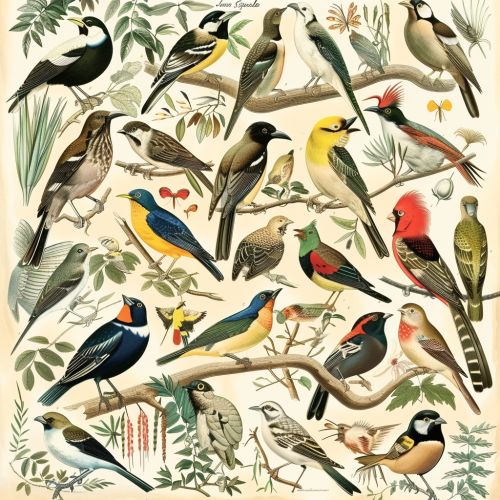John Gould
Early Life
John Gould was born in Lyme Regis, Dorset, England, on September 14, 1804. His father was a gardener, and Gould's earliest interest in nature and natural history was likely sparked by his exposure to the outdoors. He left school at the age of 14 and was apprenticed to a gardener in Windsor Great Park, where he further developed his interest in plants and animals.


Career
In 1827, Gould moved to London and began working at the Zoological Society as a taxidermist. His skill in this area quickly earned him recognition, and he was soon appointed the society's curator in 1829. During this time, he began to study and classify the society's bird collection, which would become a lifelong passion.
In 1830, Gould published his first scientific paper, a description of a new species of rhea, a large flightless bird from South America. This marked the beginning of his prolific publishing career, which would span more than five decades and include over 40 major works on birds and mammals.
Major Works
Gould's first major work, "A Century of Birds from the Himalaya Mountains," was published in 1831. This was followed by "The Birds of Europe" (1832-1837), "The Mammals of Australia" (1845-1863), and his most famous work, "The Birds of Australia" (1840-1848).
"The Birds of Australia" was a monumental achievement. It was the first comprehensive survey of Australian birdlife and included descriptions of 328 species previously unknown to science. Gould's illustrations, drawn from specimens he collected during his travels in Australia, were noted for their accuracy and detail.


Impact and Legacy
Gould's work had a significant impact on the field of ornithology. His detailed descriptions and illustrations of bird species contributed to the understanding of bird diversity and distribution. His work also played a key role in the development of Darwin's theory of evolution.
Gould's legacy continues today. His collections are housed in museums around the world, and his books are still used as references by ornithologists. He is remembered as one of the greatest naturalists and wildlife artists of the 19th century.
Personal Life
Gould married Elizabeth Coxen in 1829. She was an accomplished artist and contributed many of the illustrations for Gould's early works. They had eight children, only three of whom survived to adulthood. Elizabeth died in 1841, shortly after the family returned from their trip to Australia. Gould never remarried.
Death
John Gould died on February 3, 1881, at the age of 76. He was buried in Kensal Green Cemetery in London.
